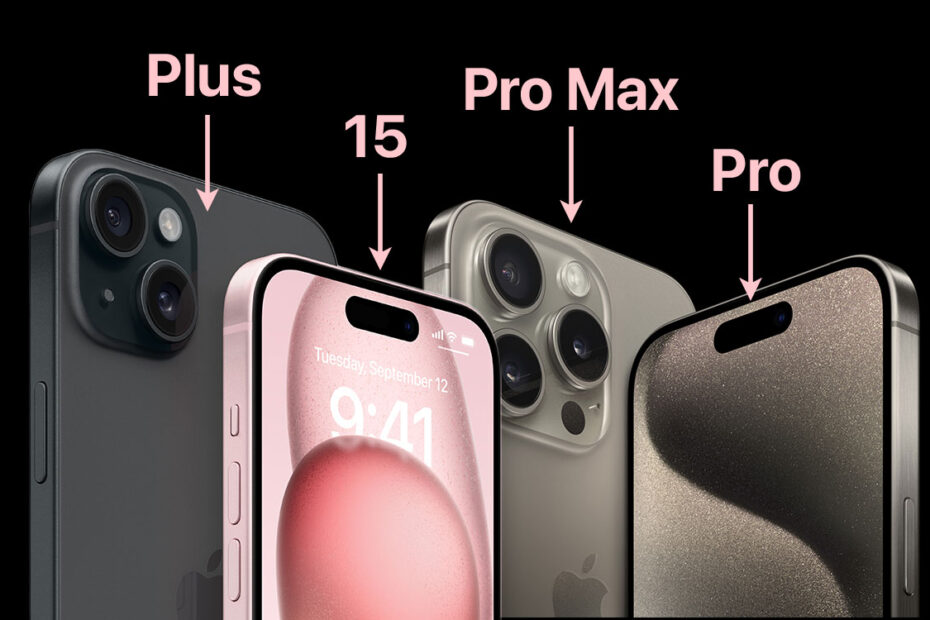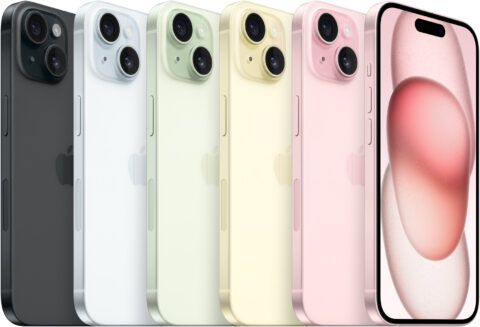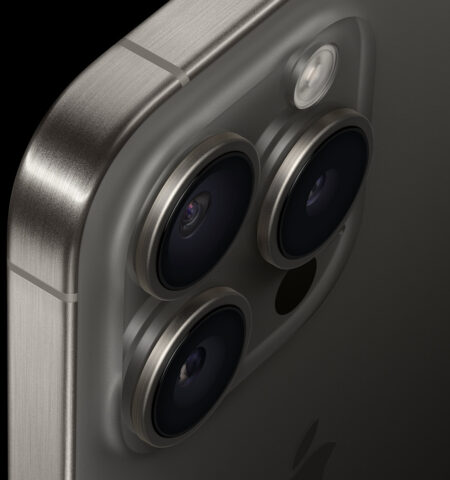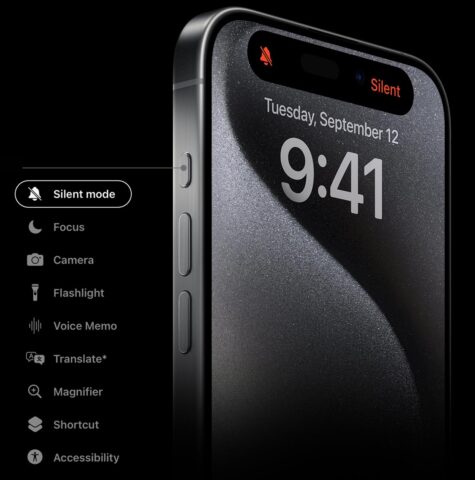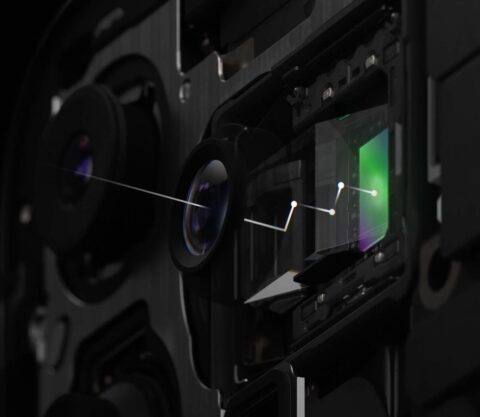Apple unveiled four new iPhones at its big September event this year. The lineup might look similar to the previous one, but if the choice between iPhone 15, iPhone 15 Plus, iPhone 15 Pro, and iPhone 15 Pro Max has got your head spinning, we’ve got you covered.
Understanding the lineup
Four models may sound like a lot to digest, and Apple loves a confusing naming scheme. But in reality, the iPhone comes in just two models, each with a plus-sized variant.
iPhone 15 is the standard flagship iPhone, a vanilla handset in the same 6.1-inch form factor as last year’s model. iPhone 15 Plus is essentially the same device, scaled up to encompass a 6.7-inch display and slightly larger battery.
iPhone 15 Pro is Apple’s premium offering, offering better specs and exclusive features but the same 6.1-inch sizing as the standard model. iPhone 15 Pro Max is essentially the same device, scaled up to encompass a 6.7-inch display and slightly larger battery, though this year also sees the Pro Max gaining a uniquely superior telephoto camera.
So, forgetting the size consideration for a moment, what’s the difference between iPhone 15 and iPhone 15 Pro, and is it enough to justify the latter costing $200/£200 more? Let’s find out.
iPhone 15 / 15 Plus
Let’s start with Apple’s baseline model(s), as they’re the ones most people are going to buy. While it’s broadly another iterative upgrade from Apple, we’re more excited by the iPhone 15 and 15 Plus than we were the iPhone 14 and 14 Plus, as the improvements are potentially more meaningful.
USB-C
Apple may have hidden this point in the middle of its iPhone 15 announcement and given it tellingly scant air time – it’s an inclusion Apple was forced into through legislation – but the switch from its proprietary Lightning to the off-the-shelf USB-C standard is headline news for many.
Disappointingly, this switch will bring about no immediate improvements to charging or data transfer speeds, as it remains the creaky old USB 2.0 standard underneath. But it does mean you’ll now be able to use a single cable to charge up your MacBook, iPad, and iPhone. Plus the new AirPods charging case, and practically every other modern gadget under the sun.
Dynamic Island
Apple is bringing the Dynamic Island over from last year’s iPhone 14 Pro. In case you missed it, this replaces the chunky Face ID notch that the company introduced with the iPhone X with a smaller, animated, interactive configuration sitting just off the coast of the iPhone 15’s top edge.
The company has smartly built a flexible heads-up notification/widget system around these shrunken sensors, with smooth animations successfully making them into a feature rather than a bug.
Rounder, more repairable design
After a quick look, you might conclude that the iPhone 15 design is identical to the iPhone 14 before it – and the iPhone 13, for that matter. However, Apple has begun to shift away from its industrial sharp-edged design language, with subtly rounded edges replacing the palm-cutting corners of previous models.
Apple has also worked on the iPhone 14’s rear section, which is now formed from a single piece of glass with the color embedded right into it. This color shifts pleasingly as you move into the camera bump, but again, this is all one piece of material. It takes on a new textured matte finish rather than a shiny one, and apparently it’s easier to repair than ever.
Speaking of colors, there are three pleasing pastel shades available this year, plus black and white.
Spec bumps across the board
While the iPhone 15 and iPhone 15 Plus screens are broadly the same dimensions as their predecessors, they get much brighter. We’re talking a peak HDR brightness of 1600 nits, and a peak outdoors brightness of 2000 nits. That’s a two-fold increase on the iPhone 14, and a match for the iPhone 14 Pro.
We expect camera improvements each and every year, but the iPhone 15 and iPhone 15 Plus have made a bigger leap than usual for the non-Pro line. They finally move away from a 12MP main sensor, joining the Pro line with a larger, sharper 48MP camera. It appears to be the same component as last year’s iPhone 14 Pro, which is something of a theme with this year’s mainstream models.
Continuing that theme, the iPhone 15 and iPhone 15 Plus gain the iPhone 14 Pro’s A16 Bionic chip. It’s a generational jump on the iPhone 14, but doesn’t match the iPhone 15 Pro’s brand new 3nm A17 Pro processor.
Other minor improvements include a bigger (albeit unspecified) battery, a new second-generation Ultra Wideband chip that’s enables you to track down your friends, and a Voice Isolation feature that lets you hone in on your calls in noisy environments. Apple has also put last year’s satellite breakthrough to wider use with roadside assistance, supported by new partner AAA.
Pricing and availability
Encouragingly, Apple hasn’t budged its pricing one bit. The iPhone 15 still costs $799/£799 for 128GB, $899/£899 for 256GB, and $1,099/£1,099 for 512GB. The iPhone 15 Plus still costs $899/£899 for 128GB, $999/£999 for 256GB, and $1,199/£1,199 for 512GB.
Both phones are available for pre-order this Friday, September 15, with availability set for a week later on September 22.
iPhone 15 Pro / Pro Max
While the iPhone 15 and iPhone 15 Plus might provide the popular choices, it’s the iPhone 15 Pro and iPhone 15 Pro Max that represent the company’s cutting edge.
Titanium body
Apple has been building its premium phones with surgical grade stainless steel since the iPhone X in 2017. With the iPhone 15 Pro and Pro Max, it’s switching over to 100% recycled grade 5 titanium, albeit combined with aluminium on the inside. This is exactly the same alloy that they used to build the Mars rover, apparently.
This is a clear upgrade for the range, providing greater strength and less weight than before. It also sees a fundamental shift in aesthetic from smooth see-your-face-in-it shiny to matte and textured. Like the iPhone 15, those titanium edges are now subtly rounded.
Customizable action button
The iPhone 15 Pro and Pro Max mark the beginning of the end for the Mute switch. Apple has swapped it out for a solid state button that provides haptic feedback in place of a physical slider mechanism.
While it fills the same role by default, with a long press putting your iPhone on silent, it can also be assigned to other tasks. Use it as a camera shortcut, launch a voice memo, or create a custom scenario through Shortcuts.
Pro Max-only 5x zoom
Apple has offered a clear distinction between the iPhone 15 Pro and iPhone 15 Pro Max this year, and we’re not talking about the obvious size difference. The larger model gains an all-new 12MP telephoto camera with a 5x optical zoom, while the iPhone 15 Pro is stuck with much the same 3x zoom as before.
This new component uses a fancy tetraprism design to bounce light around four times, rather like a periscope, for an increased 120mm focal length. It’s also a flat-out better camera than the 15 Pro equivalent – it’s a larger sensor, with autofocus and superior 3D image stabilization.
Thinner, faster, better connected
The iPhone 15 Pro and Pro Max are technically a little smaller than their predecessors, thanks to Apple reducing the thickness of the display bezels. The screen sizes remain the same at 6.1 and 6.7 inches.
Apple has ramped up the speed of its Pro line with a new 3nm A17 Pro chip. It might be the first to be named ‘Pro’, but the most impressive use case seems to be gaming, with a 20% faster GPU and hardware ray tracing support enabling it to run console-quality graphics. Native versions of Resident Evil Village and Assassin’s Creed Mirage are incoming.
Like the iPhone 15 and 15 Plus, the iPhone 15 Pro and Pro Max get the new USB-C connection standard. Unlike the iPhone 15 duo, this USB-C standard is capable of USB 3 data transfer speeds of 10Gbps, which is 20 times faster. This means you can instantly shoot 4K 60fps ProRes video footage to an external hard drive.
Talking of camera technology, the iPhone 15 Pro’s 48MP main sensor is bigger and better than the iPhone 15’s, and it can combine with the 12MP ultra-wide to shoot 3D ‘Spatial Video’ content for the forthcoming Apple Pro Vision VR headset.
You look familiar
While Apple has rung the changes with the iPhone 15 Pro, there’s one seemingly unchanged component staring us right in the face. Neither the 6.1-inch OLED screen of the iPhone 15 Pro nor the 6.7-inch OLED screen of the iPhone 15 Pro Max appear to be any different to their predecessors.
Interestingly, given the improvements to the non-Pro display, this could mean that the iPhone 15 and iPhone 15 Plus have caught up in this department. If all you want is the best screen possible, you might not need to go Pro this year.
On the colors front, Pro purchasers this year can choose from black, white, blue, or “natural” titanium finishes.
Pricing and availability
Apple hasn’t changed the pricing of the iPhone 15 Pro line in the US, and has actually climbed down from last year’s iPhone 14 Pro price hike in the UK. The 15 Pro costs $999/£999 for 128GB, $1,099/£1,099 for 256GB, $1,299/£1,299 for 512GB, and $1,499/£1,499 for 1TB of storage. The iPhone 15 Pro Max costs $1,199/£1,199 for 256GB, $1,399/£1,399 for 512GB, and $1,599/£1,599 for 1TB of storage. There is no 128GB option in the Pro Max.
Like the iPhone 15, pre-orders start from September 15, with availability set for September 22.
